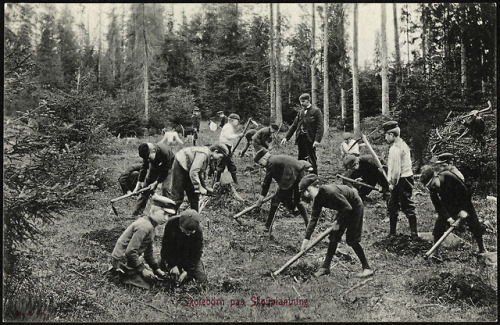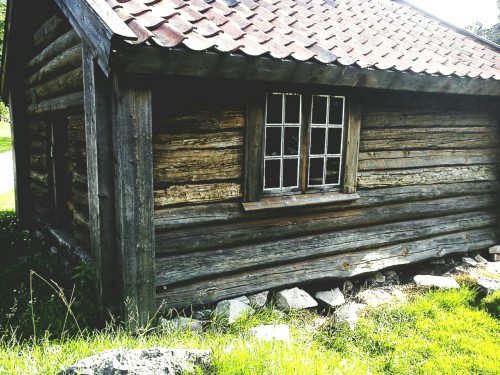#norwegian history
(The Oseberg ship, Norway, with which two women were buried)
“There are many theories about who these two women were. A queen and her slave? A sorceress and her assistant? A king’s mother and her companion? A queen and her mother, herself a queen? No one knows. One woman was between twenty-five and fifty-five, the other fifty to eighty, depending on how their ages are assessed; the higher the age at death, the less reliable are the estimates. One or both of the Oseberg women may have fought in battle: The younger woman had a broken collarbone that had begun to heal, as well as a fractured skull. The older woman badly injured her knee in her youth and had massive arm muscles; she died of cancer. Which one was Queen Asa? Probably neither. Though Asa has been linked to Oseberg since the ship burial was discovered in 1904 (one translation of “Oseberg” is “Asa’s Mound”), the scientific dating of the burial to 834 does not sync with the dates historians have deduced from Snorri’s sagas. DNA tests, likewise, kill the mother-daughter theory: The younger woman seems to have come from Persia.
The Oseberg grave mound was built to impress. It called for coordinated teams of laborers and the destruction of enormous wealth. The process took months. A deep pit 144 feet long was dug into the heavy blue clay, its bottom below the water table. A dragonship was floated up the narrow river, then portaged over a roadway of logs into the pit—by then a muddy pool—and turned so its high spiral stem faced the fjord, before being moored to a large stone.
(…)
After the beautiful Oseberg ship was moored in the valley floor, beside the narrow Slag-Bank River, a burial chamber of sturdy logs was erected on the ship’s deck behind the mast. Aft of this chamber a complete kitchen was assembled, with iron pots, a frying pan, a dough trough, a quernstone, cups and platters, knives and spoons, and at least one black glass goblet. An ox was butchered and other foods were gathered: Archaeologists have found traces of rye flour, blueberries, apples, plums, and spices, including cumin, horseradish, and mustard.
The chamber itself was furnished as a royal bedroom. Long, narrow tapestries lined the walls, one showing a battle scene, the other a ritual procession. Carved wooden beds with feather pillows and blankets woven of red and white wool filled most of the floor space. There were iron lamps on long poles, a chair, a stool, and a bast-fiber floor mat. A line of chests along the far wall had once held clothing (scraps of wool and silk showed their fine quality). There were shoes and combs, but no jewelry except for seven glass beads.
The archaeologists who opened the grave in 1904 were also surprised to find no weapons, except for two hand axes. Instead there was a plethora of textile tools—looms, spindles, scissors, yarn—and other objects that seem to have had ritual use: a leather pouch of cannabis seeds for invoking a shamanistic trance; musical instruments, including a long wooden horn called a lur, whistles and a small bell, and five sets of rattles made of large, linked iron loops. One rattle was attached with rope to a splendidly carved wooden post topped with a snarling animal head. Four similar animal-head posts were found outside the room.”
The real valkyrie, The hidden history of viking warrior women, Nancy Marie Brown
Post link
“Kaupang’s women were buried as powerful landowners and as members of the chieftain’s retinue, some with weapons. Kaupang’s men were buried with cooking equipment and keys as often as women were; tools, horses and equestrian gear were also not gender-linked. And while Kaupang’s women were more often buried with weaving tools- and seem to have controlled a vast textile industry- these tools were found in men’s grave too.”
The real valkyrie, The hidden history of viking warrior women, Nancy Marie Brown




